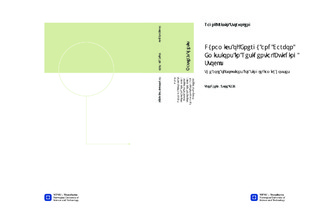| dc.description.abstract | With an ever increasing global energy consumption associated with Green House Gas (GHG) emissions, energy efficiency is becoming an important concept in most developed countries. In order to meet the future demand, while simultaneously reduce the fossil fuel consumption, both the renewable energy production and energy efficiency need to be increased. Consequentially, a strong focus is placed on energy efficiency within all sectors. Amongst these legislative acts are imposed on the building sector. The objective of the current MSc Thesis is to contribute to the understanding of the long-term dynamics of energy and carbon emissions in the residential building stock. This work is only concerned with single-family dwellings originating from before 1980, with other theses focusing on the rest of the dwelling stock. A three part analysis has been carried out assessing the energy demand, economics and future possible scenarios in the Norwegian dwelling stock. The first part established and examined the energy balance of current dwellings, as well as how it changes due to rehabilitation. An economic analysis was carried out in the second part considering the economics of implementing the rehabilitation measures. Based on the outcome of the economic assessment, some rehabilitation measures were further used in a scenario analysis, providing possible projections of future energy demand and associated emissions, as a result of these rehabilitation measures being implemented.According to the results, rehabilitation of old single-family dwellings managed the TEK 10 standard and further approached Passive House level as long as balanced ventilation was installed. Nevertheless, due to the constructional thermal bridge surcharge factor, which was held constant, Passive House level, was not entirely reached. According to the economic analysis balanced ventilation was profitable with full Passive House rehabilitation, while not with TEK 10 rehabilitation, where the energy savings were not great enough to counterbalance this additional investment. Furthermore, air-to-air heat pumps were profitable for all cases. On the other hand air-to-water heat pumps were not, as these require installment of a waterborne space heating system, which is very expensive. Additionally the electricity price was found to be very influential. For instance, the Base Case Net Present Value (NPV) increased by 37% if the electricity price was doubled throughout the period, and all rehabilitation packages, but one, will become profitable.If zero-energy level was imposed on all rehabilitated buildings the accumulated energy savings would increase with 28% compared to the Base Case situation. However, this is not a very likely scenario, and savings indicated by less ambitious scenarios are 12 19%, with accumulated emission saving of up to 7 Mton CO2-eq. Emissions resulting from the building stock was remarkable high compared to other studies, and is due to emission intensities being attributed to both the electricity mix and biomass combustion. The electricity mix was found to have major influence on the emissions resulting from the building sector. Hence, rehabilitation measures lowering the electricity demand will induce the largest emission savings. Furthermore, a preliminary analysis of primary energy showed that taking this into account will increase the energy consumption significantly and the electricity mix chosen will greatly influence the results. | nb_NO |

